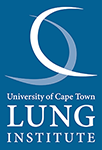Scaling Up Low-Cost Bubble CPAP in Low-Resource Settings for Children (OPT-bCPAP)
Source of funding
This implementations study is funded by Global Health EDCTP3, a partnership between the European Commission, representing the European Union, and the EDCTP Association, representing the governments of European and sub-Saharan African countries participating in the partnership.
Consortium Members:
- University of Cape Town Lung Institute (UCTLI) - email: [email protected]
- FARMOVS (South Africa)
- Karolinska Institutet (Sweden) - email: [email protected]
- Oxygen for Life Initiative (Nigeria) - email: 1) [email protected] 2) [email protected] 3) [email protected]
- Armauer Hansen Research Institute (Ethiopia) - email: 1) [email protected] 2) [email protected]
- Lilongwe Medical Relief Fund trust (Malawi)
- Uppsala University (Sweden) - email: [email protected]
Contract Affiliates:
- Fenot Associates
Contact: Dr. Girmaye D. Dinsa [email protected]
Background and Rationale:
Pneumonia is the leading cause of death among children under five globally. Pneumonia killed 740,180 children under the age of five in 2019, accounting for 14% of all deaths of children under five [1]. Although pneumonia affects children and families everywhere, under-five deaths are highest in southern Asia and sub-Saharan Africa (sSA) with just 5 countries accounting for 50% of the mortality and among which, Nigeria ranks 1st and Ethiopia is 4th. In 2019, 129, 444 and 19, 592 children under-five died of pneumonia in Nigeria and Ethiopia respectively [2].
The majority of these childhood pneumonia deaths are deemed to be preventable with early diagnosis, appropriate case classification, management, and rational antibiotic treatment. However, for children in sSA, pneumonia diagnosis is often delayed and are not properly managed and these contribute to increased morbidity and mortality [3].
In patients with childhood pneumonia, mortality can be reduced by up to 35% with the right interventions in the measurement of hypoxaemia and appropriate use of oxygen therapy such as the continuous positive airway pressure (CPAP), which is recommended by the World Health Organization (WHO)[4]
Considering the gaps in healthcare for this vulnerable population in sSA, the project will be supporting the implementation of bubble CPAP (bCPAP) in 37 hospitals across Ethiopia, Nigeria, and Malawi using a three-phase implementation process. The project aims to identify the main factors associated with treatment failure and mortality in hospitalised children with severe pneumonia during the implementation of the bCPAP.
Primary Objectives:
- To evaluate the implementation outcomes (coverage, Fidelity, adoption and sustainability) of contextually appropriate bCPAP for optimizing oxygen therapy for children with severe pneumonia in Ethiopia, Nigeria, and Malawi.
- To determine the barriers and facilitators of Implementing BCPAP oxygen therapy for children with severe pneumonia in Ethiopia, Nigeria, and Malawi.
Study Population and Procedures
A low-cost bCPAP device will be used to provide low-flow oxygen to children with severe pneumonia and hypoxemia. The study’s outcomes will be assessed using the RE-AIM framework to determine individual-level outcomes through measuring reach and effectiveness of the intervention and wider outcomes though a qualitative assessment of settings and staff of the adoption, implementation (feasibility, acceptability, and intervention fidelity), and maintenance of continued use of bCPAP as a form of treatment in designated hospitals.
References
- World Health Organization. Pneumonia in Children 2022.
- Vos T, Lim SS, Abbafati C, Abbas KM, Abbasi M, Abbasifard M, et al. Global burden of 369 diseases and injuries in 204 countries and territories, 1990–2019: a systematic analysis for the Global Burden of Disease Study 2019. The Lancet 2020;396:1204–22. https://doi.org/10.1016/S0140-6736(20)30925-9.
- Uwemedimo OT, Lewis TP, Essien EA, Chan GJ, Nsona H, Kruk ME, et al. Distribution and determinants of pneumonia diagnosis using Integrated Management of Childhood Illness guidelines: A nationally representative study in Malawi. BMJ Glob Health 2018;3. https://doi.org/10.1136/bmjgh-2017-000506.
- Duke T, Wandi F, Jonathan M, Matai S, Kaupa M, Saavu M, et al. Articles Improved oxygen systems for childhood pneumonia: a multihospital effectiveness study in Papua New Guinea. The Lancet. 2008;372. https://doi.org/10.1016/S0140.
-


This project is part of the
EDCTP3 programme supported
by the European Union
